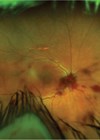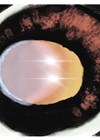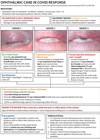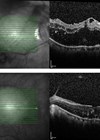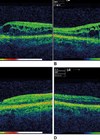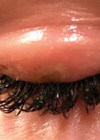Trainees
Orbital cellulitis - an overview of the diagnosis and management
Periorbital (preseptal) and orbital cellulitis are infections of the subcutaneous tissues of the eye. They are differentiated by the location of the infection. Periorbital cellulitis refers to infection of the eyelid and subcutaneous tissues anterior to the orbital septum, whereas...
Innovation update: key advances in eyecare transformation in the last year
Vishal Shah and his co-authors reflect on examples of innovation in eyecare delivery published in the last year and the implications for the future of eyecare services. The “new normal” is an overused phrase to describe extraordinary measures that have...
The power of the full blood count
Vishal Shah walks us through his thought process whilst highlighting the importance of routine investigations when dealing with unusual retinovascular presentations. Retinal changes can arise in anaemia, leukaemia, lymphoma, myeloproliferative and myelodysplastic syndrome. They are often the first manifestation of...
“Beware of the pigment”
Using some captivating artwork, Iheukwumere Duru describes key features of pigment dispersion syndrome. Pigmentary dispersion syndrome (PDS) leads to pigmentary glaucoma (PG) in approximately 35-50% of patients with the condition [1]. PG is the leading cause of non-traumatic blindness in...
Digital eyecare – enabling better communication between primary and secondary care
Alexander Chiu and his co-authors highlight innovations influencing healthcare advancement and how trainees can get involved. Hospital eye services (HES) were under great pressure to meet demand, even before the COVID-19 pandemic. This pressure has increased with the cancellation and...
Proning and the pandemic - ocular complications seen in critical care
Priyanka Sanghi and her co-authors explore the ocular complications seen in critical care units throughout the country as we treat patients through this challenging time. The SARS-Cov-2 (COVID-19) pandemic has placed the NHS and critical care services under immense strain,...
Understanding vasoproliferative retinal tumours
Syed Irtiza Ali Shah explores this rare and unusual condition through a fascinating case presentation. Vasoproliferative tumours of the retina (VPTR) are a vascular mass with an associated exudative retinopathy alongside the presence of minimally dilated feeder vessels. This is...
Cancer associated retinopathy
Abdul Muhyemin Tarin reviews the presentation, pathophysiology and management of this paraneoplastic syndrome. Case presentation A 60-year-old hypermetropic female patient presented with several months’ history of painless blurred vision. Visual acuity (VA) was 6/24 and 6/9-1 in right and left...
The fragile p-value
Abdus Samad Ansari explores the limitation of the p-value and the application of the fragility index in clinical trials. Clinical trials and tribulations? The restoration of vision or more purely the gift of sight is an aspect of care that...
The paediatric cataract: an overview of the diagnosis and management
In this second article (see first article here), Samuel Aryee and Rhys Dumont Jones review the challenges involved in managing this condition. Examination and diagnosis Cataracts in children can appear in a variety of forms, each presenting in a different...
Radiation retinopathy
The authors review the current treatment options for this condition. Radiation retinopathy (RR) occurs as a complication after exposure to any type of radiation (external beam, plaque brachytherapy and stereotactic radiosurgery) in the orbital or adnexal region. These include nasopharyngeal...
Thermal injury and false eyelashes
The authors provide a case of cyanoacrylate glue causing a thermal burn on the eyelid and explain how this type of burn should be managed. The use of false lashes as well as the techniques used to apply them come...




